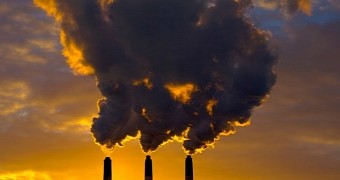Air pollution affects more than just public health and wildlife, researchers explain in a recent paper in the journal Nature Geoscience. In a nutshell, it also influences waterways in the sense that it ups the amount of water flowing through a river at any given time.
The catch is that the more time and money are invested in cleaning up the air in a given region, the greater are the chances that the region in question will struggle with freshwater availability as local air quality takes a turn for the better.
How air pollution influences land hydrology
In their paper in the journal Nature Geoscience, the specialists behind this research project explain that aerosols are one of the chief constituents of air pollution. Due to the fact that they are reflective, aerosols limit the amount of sunlight reaching our planet's surface.
This phenomenon is known to the scientific community as solar dimming, and it influences evaporation rates. Otherwise put, aerosols keep water on the ground by preventing evaporation. In doing so, they up the amount of runoff that reaches rivers, causing the latter to swell.
The presence of aerosols in the air can cause river flows to up to a considerable extent. “We estimate that, in the most polluted central Europe river basin, this effect led to an increase in river flow of up to 25% when the aerosol levels were at their peak, around 1980,” says study lead author Nicola Gedney, as cited by EurekAlert.
It is understood that increased carbon dioxide levels in the air hovering over a certain region influence water flow as well. As explained by Nicola Gedney, “In addition we find a further indication that increases in carbon dioxide may have increased river-flows by reducing water loss from plants.”
What cleaning the air will do to waterways
Specialist Nicola Gedney and colleagues believe that the cleaner the air in certain parts of the world will get as a result of policies intended to curb pollution, the more likely local waterways are to experience a drop in their flow.
What this means is that many human communities will be at a greater risk to be affected by freshwater shortage. Mind you, this does not mean that we should just pull the plug on efforts to curb air pollution.
It simply means that, when planning for the future, we must also take into account this find that the presence of aerosols and carbon dioxide influences land hydrology. “With water shortages likely to be one of the biggest impacts of climate change in the future, these findings are important in making projections for the future,” Nicola Gedney wishes to stress.

 14 DAY TRIAL //
14 DAY TRIAL //